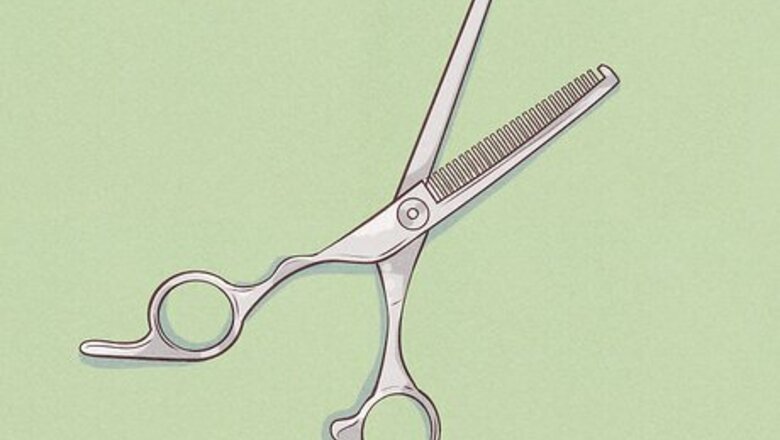
views
Using Thinning Shears
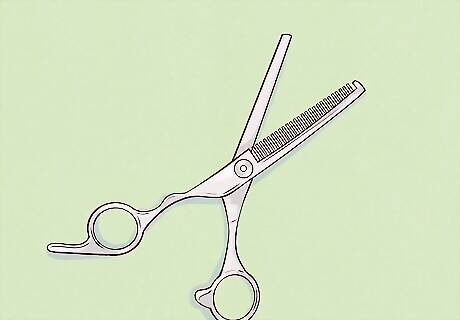
Purchase a pair of thinning shears. Thinning shears are often used by stylists in salons, and look like scissors with a thick, serrated edge. They are designed to cut about 15% of the hair, resulting in hair that still holds its shape and style but has less volume and density. You can buy the shears from beauty supply stores or the hair care section of most department stores.
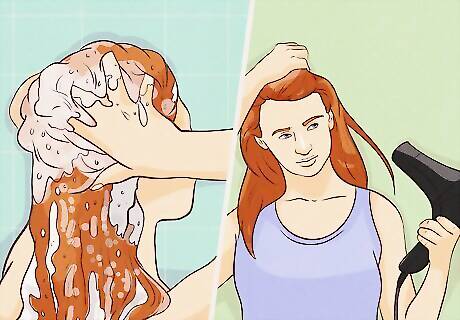
Begin working with clean, dry hair. Before thinning your hair, shampoo and dry it as normal. If you tend to let your hair air dry, do that; if you use a blow dryer, go ahead and style it that way. Your hair should be as close to its normal, everyday texture as possible. This prevents you from over-thinning your hair. Don't add any styling products to your hair before thinning it. These can clog the shears and change how full your hair looks, which will affect your ability to thin it properly.
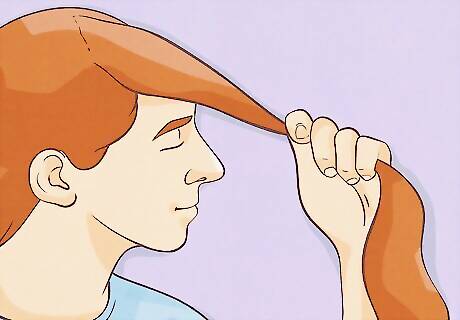
Gather a 2–3 in (5.1–7.6 cm) wide section of hair to thin. It's best to thin a section at a time, and thin the same amount all around your head. Hold the first section away from your head and clip the rest back, focusing on just the ends of the section that you have. If your hair is shorter, you might have fewer sections because it’s difficult to thin hair that is close to the scalp.

Use the thinning shears to cut your hair down the shaft. Place the scissors with the serrated edge facing down about 2–3 inches (5.1–7.6 cm) from the end of your hair, and position the shears at a 45-degree angle. Then, close the shears over your hair and open them. Move them down 1 inch (2.5 cm), closing them over the hair again. Repeat until you reach the bottom of your hair. If you face the serrated edge down, then the hair will be thinner underneath, but it'll be hidden by longer pieces of hair. Be careful about starting too close to the roots. With thinning shears, you want to make cuts about 1 inch (2.5 cm) from the ends of the strands of hair. If you cut too close to the roots, you hair may end up with a weird texture.
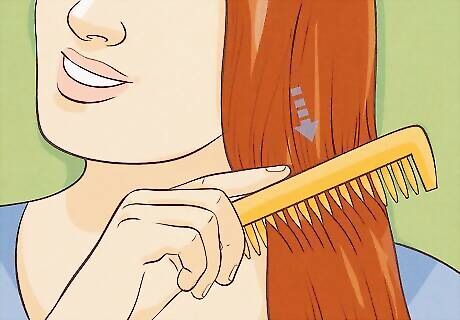
Comb the thinned section of hair. Run a comb through a few times to remove all the cut pieces of hair. Then, take a look at the newly thinned section. Compare the section to the rest of your hair to see if you’ve thinned enough. If you think the hair is still too thick, go back and make a couple more cuts with the thinning shears. You can move slightly further up the shaft of the hair if necessary to prevent cutting the same place too many times.

Repeat with the rest of your hair. Section by section, use the same method to thin out your hair until you have moved all the way around your head. To make sure it looks even, try to make the same number of cuts each section. Remember to comb out each section after you thin it to compare it to the rest of your hair. This will help to keep the cut even and prevent over-thinning. If you have trouble seeing the back part of your hair, face away from a mirror and position a hand-held mirror in front of your face to view the reflection of the back of your head. Alternatively, you may want to ask someone to trim the back of your hair for you, if you can.
Styling Your Hair Differently

Opt for a longer, layered cut if the ends of your hair tend to be fuller. With short cuts, thick, bushy ends can rise to a point at the top of your scalp, giving your hair an unbalanced look, especially if you use thinning shears. Layers help to redistribute the volume for an overall look that is sleeker and less poofy. Tell your stylist that your hair feels too full and heavy on the bottom, and that you'd like long layers for a thinned-out look. Try to avoid blunt cuts that tend to be less forgiving of areas with more thickness. If you have a blunt cut, ask your stylist to incorporate more layers, especially if you’re growing your hair from a shorter style.

Style your hair with a blow dryer for an easy everyday look. Start drying at the roots and work down to the ends. Position a round brush underneath the hair to brush the hair in a downward motion as you apply heat to the top of the hair. You can rotate the round brush slightly at the end of the hair to add a small curl, or just let the hair slide through the brush. Try to avoid pulling up on the hair as you dry it with the brush because this can add volume to your roots and make the hair look thicker. After drying thick hair, it can sometimes look frizzy due to the water evaporating from the hair. A taming product like argan hair oil or anti-frizz serum can help keep the hair looking sleek throughout the day.

Use a flat iron for an even thinner look. Flat irons use very hot metal plates to make the hair as flat and thin as possible. Make sure your hair is completely dry, then slowly pass the iron over 1 in (2.5 cm) sections of hair 1-2 times to make sure it’s completely straight. When you use a flat iron, always apply a heat protector serum to your hair before styling to prevent hair damage. Try to avoid straightening sections more than 2 times because this can cause breakage from the iron pulling on the hair. If you find your hair isn’t straightening after 2 passes, increase the heat. If this still doesn't help, then you may need to switch to a flat iron that has ceramic, titanium, or tourmaline plates.
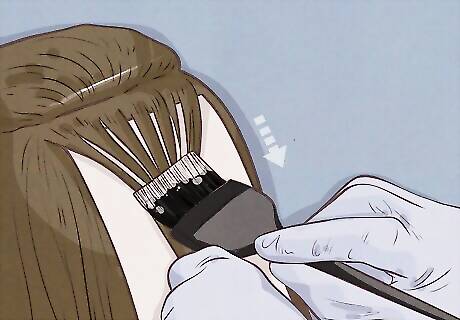
Consider chemical straightening for a semi-permanent solution to thick hair. Treatments like the Brazilian Blowout and keratin straightening change the chemical structure of the hair to keep it looking sleek and thin. A hair stylist will apply the chemical to your hair in a multi-step process that involves heating the hair and styling it to be straight and smooth. Although they’re sometimes advertised as “permanent,” these can treatments require touch ups and re-applications every few months, depending on your hair and the treatment. These treatments are expensive and sometimes release irritating chemicals into the air when applied to the hair. If you have budget constraints or have had a reaction to chemical treatments in the past, you might want to consider other options.
Changing Your Hair Care Routine
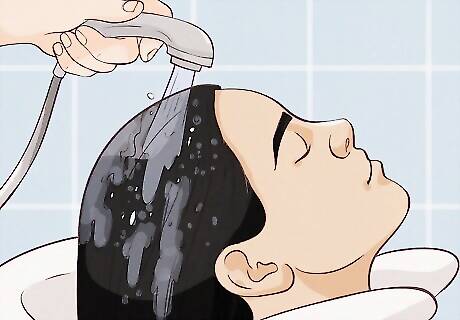
Wash your hair in cold water to reduce volume and frizz. Washing your hair with hot water causes the hair shaft to open, resulting in a lot of frizz and extra volume. Using cold water causes the hair shaft to lie flat, resulting in sleeker, shinier, less puffy-looking hair. If you hate cold showers, go for lukewarm instead. Even the slightly reduced temperature will help your hair look thinner. Instead of washing your whole body in cold or lukewarm water, you could also put your hair up in a shower cap during your regular shower and then wash it separately in cold water afterward.
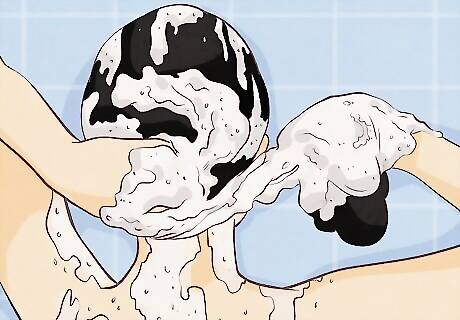
Shampoo your hair only 2-3 times per week. Aim to wash your hair every 3-4 days to utilize natural oils that keep your hair healthy and protected. The rest of the time, simply rinse your hair with cool water. It may take your hair some time to get used to this new routine, but you can use products like dry shampoo to keep your hair looking fresh in the meantime! When shampoo your hair use a quarter-sized amount of non-volumizing shampoo and focus on cleaning your scalp rather than your hair. Sulfate-free and paraben-free shampoos are other great options to consider. Washing your hair with shampoo every day removes the natural oils that keep it looking sleek and healthy. This can cause your hair to look bushy, frizzy, and thick.

Use apple cider vinegar instead of conditioner. Mix half vinegar, half water in an old conditioner or spray bottle to use as a conditioner. Apply it all over your hair when you're done shampooing and rinse it out at the end of your shower. When your hair dries, it will look soft and shiny, rather than frizzy and bushy. Conditioner contains agents that coat your hair and can make it look thicker. Apple cider vinegar has many of the same smoothing effects as conditioner, but won’t coat your hair. Be aware that apple cider vinegar has a very strong smell, so you may want to apply it sparingly at first to make sure your hair and scalp don’t absorb the scent. One great way to disguise the scent is to apply a scented leave-in product, such as a conditioning spray, after your shower.
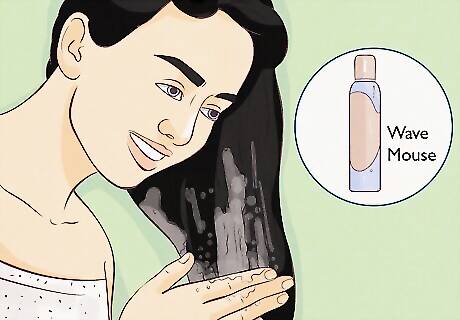
Use volume-reducing hair products. There are a variety of gels, creams, and serums on the market that are designed to straighten or tame unruly hair. Depending on the product, you can either apply it before or after styling your hair to tame frizz, add shine, or smooth waves. If you have curly or textured hair, look for products made specifically for your hair type. They can help tame the frizz and puffiness without damaging natural curls. Avoid using mousse and other products that are made to increase volume.

















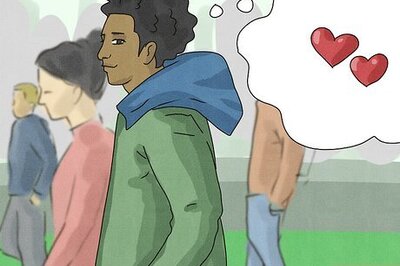


Comments
0 comment